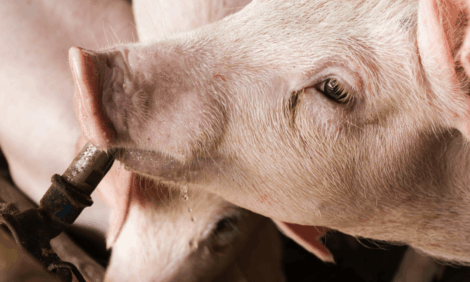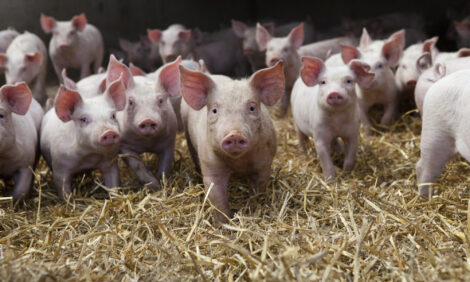



Improve Digestibility of Feed by up to 10 Per Cent
A producer found his pigs less aggressive as well as better performance and less feed wastage after using a Bygholm Sieve to check the particle size of his home mill-and-mix feed. He describes his experience in BPEX KT Farm Case Study 9.Farm Facts
Name: F.J. Bosworth & Sons
Location: Spains Hall, Essex
Farm size and enterprise: 270 sows breeder/feeder, home mix and mill with home production of cereals used for pig feed.
Benefits
- Reduced restlessness, aggression and tail biting among finishing pigs
- Improved feed utilisation
- Reduced wastage (up to 10 per cent)

Background
Producer Stuart Bosworth had noticed increased restlessness, aggression and tail biting among finishing pigs when a particular variety of wheat was included in the diets. His regional BPEX KT manager suggested he investigated using the Bygholm Sieve. They found that although the variety produced a similar particle size to other wheat varieties, it was stickier. After removing the 'sticky' wheat from the feed, no further problems were seen.
The Bygholm Sieve was later used to analyse other grains. They found that 10 per cent of the rapeseed meal sampled was too coarse because some of the fine material had stuck together and formed clusters. Unmilled soya (HiPro) showed similar results with up to 10 per cent of the product being too coarse to be digested by pigs effectively.
Furthermore, from next harvest, all grain destined for pigs will pass through a pre-cleaner and dresser before storage and milling to reduce the high levels of dust which have been contributing to sneezing and pneumonia.
* We spend so much money on feeding our pigs, so why not put a little effort into analysing the feed for optimal efficiency? |
|
Stuart Bosworth, producer
|
The Bygholm Sieve
The sieve, originally developed in Denmark, is used for monitoring the degree of coarseness of feed, cereals and other feed products.
The coarseness and degree of grinding has an impact on feed efficiency:
- Fine grinding of the feed means that pigs can easily utilise the nutrients within it but intake can be reduced; this is common when feeding dry feed. Moreover, fine grinding can result in stomach ulcers.
- A coarser grinding of the feed can result in poorer feed efficiency, but can have a positive effect on stomach ulcers, or if there is a problem with Salmonella, E. coli or ileitis in the herd.

Key to success
- Regularly take feed sample for analysis with the Bygholm Sieve
- If you are a home mill and mix producer, you can analyse your raw materials individually
- If you purchase meal diets, you can analyse a feed sample and identify clusters, shells and other wastage that the pigs are unable to use for growth, and
- The Bygholm sieve can give you an indication of how much unutilised feed can cost you.








